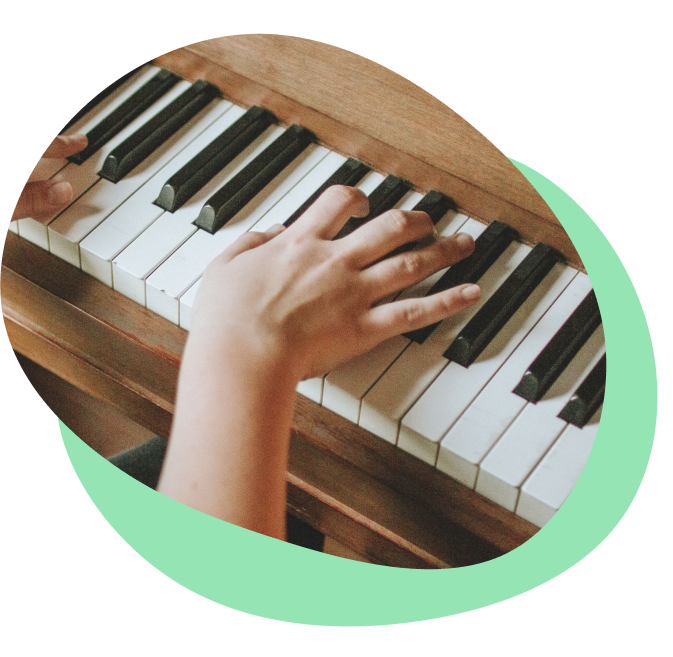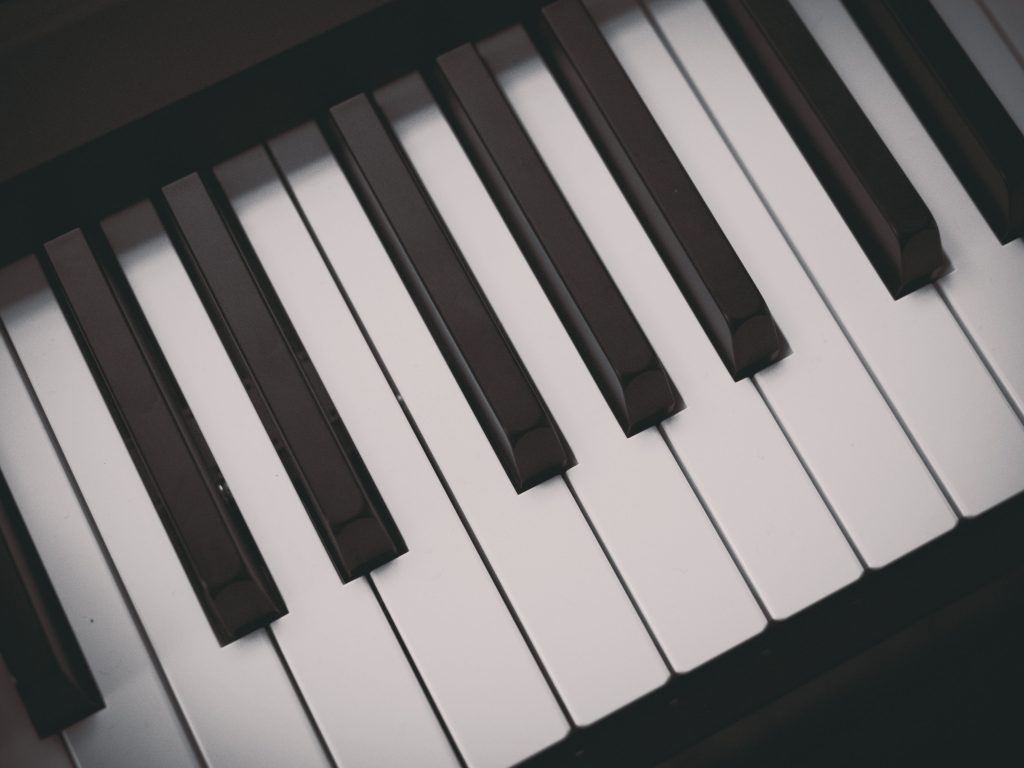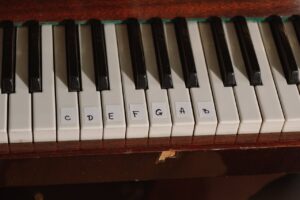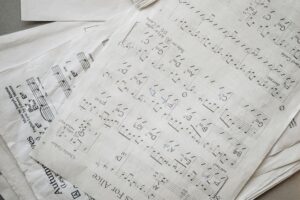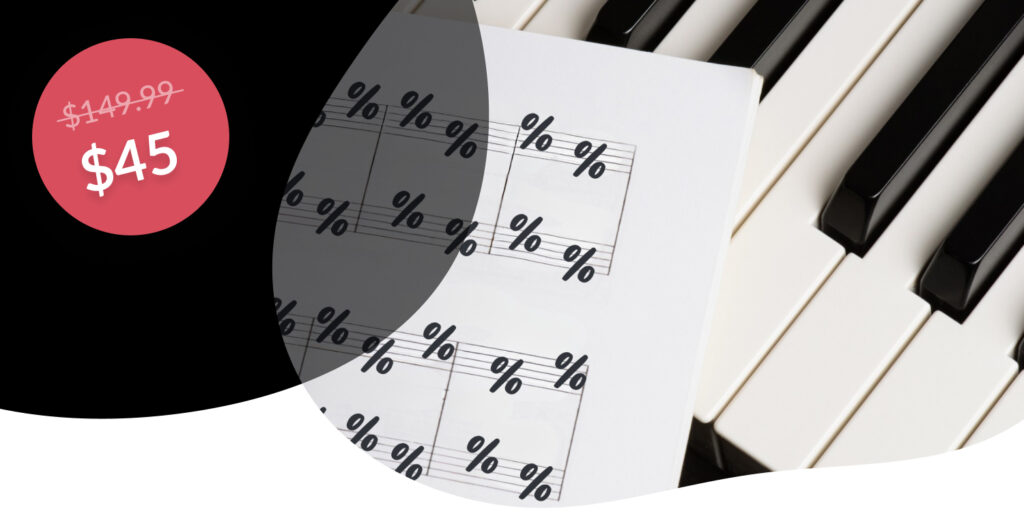Broken chords are an essential part of piano technique. They are characterized by their staggered note execution. This staggered approach adds rhythm and fresh textural qualities to compositions, making broken chords a crucial piano skill for you to know. If you’re new to broken chords you’re in luck, Skoove is here to help. This article will cover what broken chords are, how to use them, the role they play in compositions as well as some helpful practice techniques. Let’s get started!
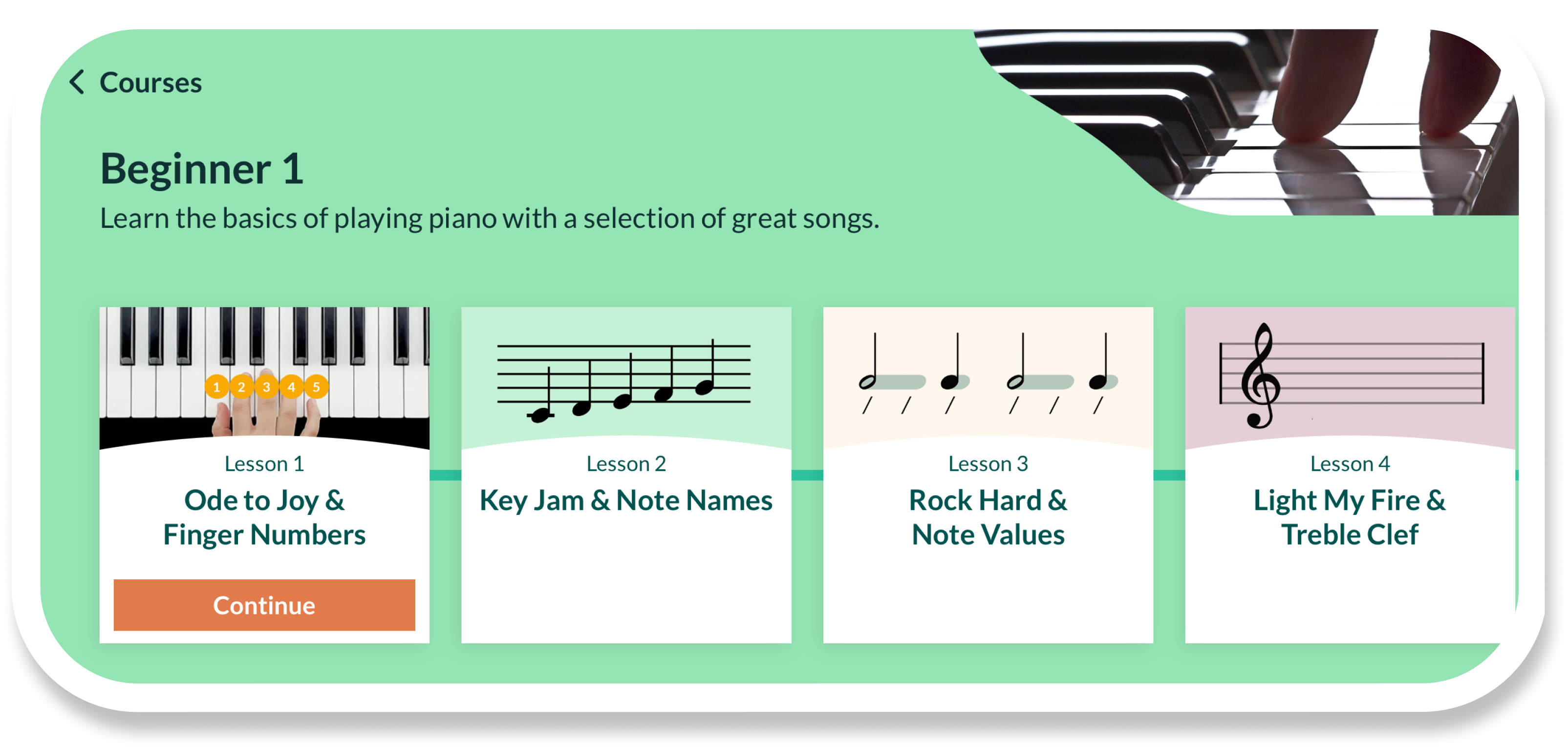
What are broken chords?
What is a broken chord in music? A chord is multiple notes played simultaneously. When these notes are played one after the other, we call it a broken chord. This pattern can be ascending, descending, or any combination of the two. To understand the basic structure of piano broken chords, you need to be able to recognize the root, third, fifth and possibly additional notes that make up some extended chords. Let’s take a look at an example.
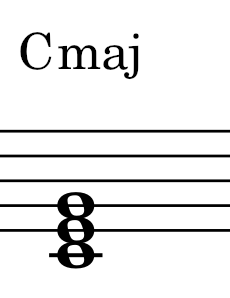
A C major chord broken chord example like this one would be played as individual notes C, E and G in succession.
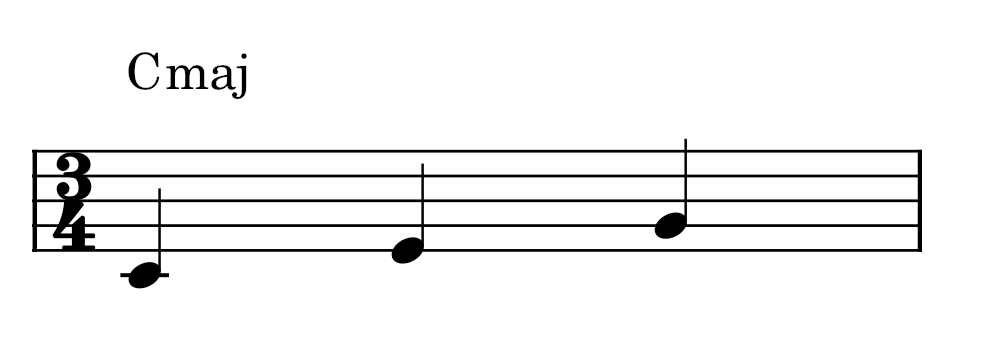
Why broken chords matter in piano music
Broken chords are extremely useful and can add a more nuanced emotional undertone than standard block chord playing. Knowing how to play broken chords on piano is essential for pianists at all levels, it not only enhances technical proficiency but can also contribute significantly to the depth and nuance of a musical interpretation.
Broken chords can be used and adapted in a wide array of musical contexts. In classical music, broken chords can provide lush, romantic backdrops. In contrast, in contemporary genres like pop or jazz, they can be used more rhythmically to add more groove or drive to a piece.
Playing broken chords in different time signatures
To play broken chords you will need to understand how time signatures work. For instance, a broken chord played with each note corresponding to each beat in a 4/4 or 3/4 creates a steady and predictable rhythm. This is ideal for beginners or for establishing a calm, steady pace in a piece with broken chords. Have a go at this example, and the above, of a broken C major chord in both 4/4 and 3/4.

Broken chords in compound time
Time signatures like 6/8 or 9/9 are compound time signatures. These time signatures divide measures into threes. Playing broken chords in these time signatures involves not only playing the notes of the chord in sequence but also aligning them with the compound rhythm.
For example, playing a broken chord in a 6/8 time signature may involve playing two notes of the chord per beat, resulting in a waltz-like rhythm.

Learning how these differences in time signature work is extremely important if you want to apply and adapt broken chords to your favourite songs.
Common patterns with broken chords to inspire beginner pianists
There are many types of broken chords in music. Common examples of these are good for beginners to learn as they help improve hand coordination. Let’s examine these three common broken chord patterns.
Arpeggio
An arpeggio is a broken chord where you play the notes one at a time ascending or descending, or both. It’s one of the most common variations of the broken chord.

For example, a C major arpeggio is played as C, E, G and can extend across octaves like this.
Arpeggios are great for building smooth finger technique and are also great for warm-ups.
Alberti bass
Alberti bass is a common classical pattern. It follows a specific sequence. The sequence can be thought of in scale degrees but it’s easier to just think lowest, highest, middle then highest.
In C major, this would be C, G, E, G repeated like this.
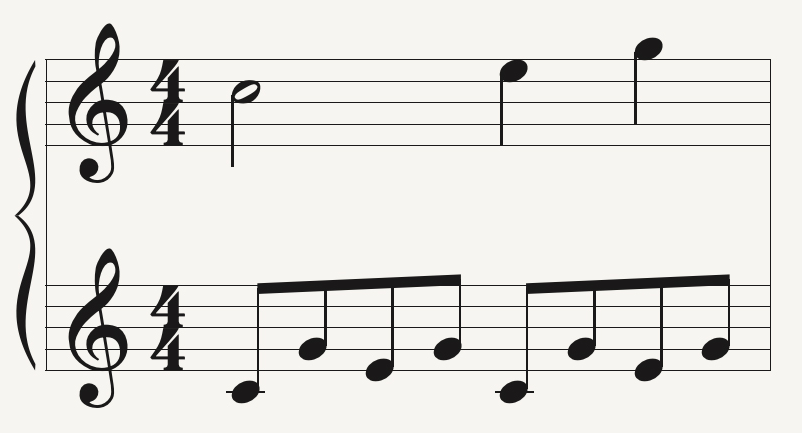
It’s usually played as a left hand pattern and provides a flowing broken chord accompaniment beneath a melody. It can often be found in works like Beethoven’s Sonatine No. 5. and many other piano songs on Skoove,
Pop pattern
Pop-style broken chords use simple rhythms and repeated patterns to create a steady, flowing feel without using block chords.

Broken chord progressions
A broken chord piano progression often follows familiar patterns found in various musical styles, like the ones we have just looked at. For example, if you play this I – vi -IV – V progression you transform a static progression into something more developed and interesting.

A broken chord symbol in sheet music is the same as for block chords. However, the way they are played differentiates them. Recognizing these symbols and understanding how to play them in a broken manner is key to mastering this technique. You will have to use all the knowledge you have learned in this article to apply it to chord progress. This will take practice so broken chord patterns become familiar. Then you can incorporate them into your playing seamlessly.
Practice strategies for broken chords
Like all things piano, consistent practice is essential to master broken chords. A variety of exercises and drills can help with this process.
- Start with simple arpeggios played one note at a time to get comfortable with the finger movements.
- As you get better practice with more complex chord structures and progressions, varying the rhythm and speed to challenge your skills.
- Then practice the same broken chord pattern in both 4/4 and 6/8 time signatures. This can provide insight into how rhythm influences the feel of the chord.
- You can also play broken chords with different dynamic levels (piano, forte, crescendo, etc.) this will help master expressive playing.
- Once you are more comfortable you can move your broken chords through as many keys and tonalities as you like.
Conclusion
As you incorporate broken chords into your playing, focus on the practical applications, how they can vary the texture of a piece, provide rhythmic interest and enrich harmonic progressions. Through consistent practice and exploration of different styles, broken chords become a valuable tool in your musical toolkit. If you need any help, Skoove is always here with handy tips, articles or lessons on any of the topics in this article. Keep up the good work and happy playing.
Author of this blog post:
Susana Pérez Posada

With over seven years in piano education and a deep passion for music therapy, Susana brings a unique blend of expertise to Skoove. A graduate in Music Therapy from SRH Hochschule Heidelberg and an experienced classical pianist from Universidad EAFIT, she infuses her teaching with a holistic approach that transcends traditional piano lessons. In her writings for Skoove, Susana combines her rich musical knowledge with engaging storytelling, enriching the learning experience for pianists of all levels. Away from the piano, she loves exploring new places and immersing herself in a good book, believing these diverse experiences enhance her creative teaching style.
Published by Lydia Ogn from the Skoove team




